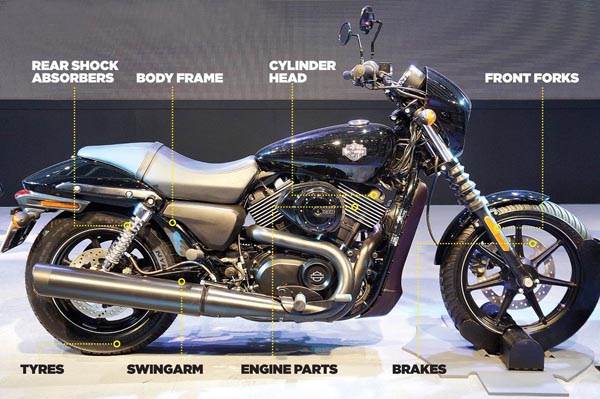At the Auto Expo 2014, held earlier in February, Harley-Davidson launched its most affordable model ever for the Indian market, the Street 750. This new bike from the motorcycle major's stables is a huge step for the manufacturer considering the stunning sticker price of Rs 4.1 lakh (ex-showroom, Delhi) is likely to make the iconic brand accessible to a new group of customers. With such an aggressive price, Harley-Davidson has unleashed a price war of sorts at the premium end of the motorcycle market.
But exactly how did this manufacturer achieve such a feat? Despite its popularity as a big bike brand, Harley-Davidson has also been synonymous with expensive price tags here.

But India has been growing as a global sourcing base and the Street 750 has a very high level of content sourced from Indian suppliers. Parts like front forks, swingarm, body frame, cylinder head, engine parts, brakes and tyres, have all come from Indian manufacturers. It is, perhaps, the first time that such a high level of critical components is being sourced for any product by the 110-year-old company.
According to industry sources, the cost benefit to the OEM by this strategy could be 20 percent or more. “A manufacturer of Harley-Davidson’s stature looks for both a high level of performance and aesthetics in the products that go into a bike. That is a challenge,” says an industry source.
What is interesting is that the orders are for the Street 750’s production for all markets. This reflects the growing competence of Indian vendors in production and processes while offering a cost advantage to their clients. Harley-Davidson India refused to comment on the level of the Street 750’s parts sourced from India, as it "does not break out details on region-specific sourcing".
Anoop Prakash, MD, Harley-Davidson India, said: “We go to great lengths to ensure everything manufactured at our facilities around the world as well as at our suppliers lives up to the high standards of quality that are fundamental to our brand. Quality is top priority for Harley-Davidson, regardless of where we manufacture or sell motorcycles.”
That, perhaps, explains the three-four rounds of evaluation of the vendors by Harley-Davidson’s sourcing team before they finally signed the contract. The evaluation processes commenced in mid-2010 and the Street 750’s production began around September last year. Our sister publication, Autocar Professional, learnt that Harley-Davidson is planning to produce 20,000-25,000 units of the motorcycle annually.

The Street 750, first displayed at the EICMA Motor Show in Milan last year, is the first model by Harley-Davidson India to be locally manufactured at the Bawal plant in Haryana. The plant will also make the Street 500 model (meant only for global markets, excluding India).
After having surveyed over 3,000 young consumers from 10 countries including India, the Street 750 is a more manageable, manoeuvrable motorcycle with an all-new suspension and a ground clearance of 144mm. It is powered by a four-stroke, 750cc, V-twin engine, with a torque output of 6.62kgm at 4000rpm and mated to a six-speed transmission.
With the introduction of the most affordable Harley, there will be a beeline for the Street 750 when bookings begin from March 1. And the company could see much healthier numbers in 2014-15.



Comments
Member Login
Personal Details
No comments yet. Be the first to comment.